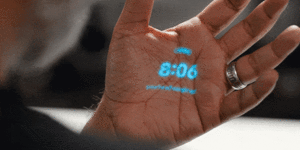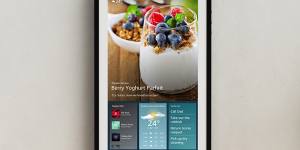While the constant mobile connectivity of phones has given us ways to keep in touch,and made everything from movie-watching to public transport much more convenient,they also nag us constantly with notifications,drawing us into addictive behaviours. Could a new wave of technology help address this?

In a video demo,an AI Pin user asks about the nutritional value of dragonfruit.Supplied
The AI Pin and screen-free phones
The smartphone is the heart of our online connectivity when we’re on the go,meaning we not only use it constantly to find information or consume media,but we need it to supply data to other devices such as headphones and watches. But technically we could do the same thing with any device capable of communicating with mobile towers,so is there a better gadget for the job than the powerful screen-covered pocket computers we currently use?
US company Humane wants us to think so,and its solution is a $1000 magnetic gadget called,which packs a camera,microphone,speaker and touchpad and which you wear on your clothes. It’s a lot like a phone with no screen,which you interact with by speaking. You can ask it questions you would normally Google,but it also has access to personal information such as your text messages so you could ask about something someone sent you recently. It will let you know if someone’s calling you,but will also summarise less urgent information rather than alerting you to every message and email.

The AI Pin has a projector for displaying on your hand.Supplied
When you do need visual information,the AI Pin has a projector so it can display text and simple graphics on the palm of your hand. You can interact with it by tilting and moving your fingers. The camera on the device can be used to capture quick photos.
Early impressions of the device — which is currently only sold in the US — have not been overly positive,and the consensus seems to be that most of us still need the option of a screen for day to day life. But it’s easy to see how the idea — offloading the central processing,connectivity and AI to a device that is not a phone — is a good one. In the future,we may be able to choose what devices we want to take with us,be it headphones,watch or a little credit card sized screen,and have it work with our connected pin.
Moving vision from your pocket to your face
Before we replace smartphones entirely,we can expect to see devices that put some of their components in more natural positions on our body. Just like we put activity detection technology on our wrists and speakers on our ears,more devices in the near future will put cameras on our faces.
are an early example of this,with the $450 specs connecting to your phone but letting you leave it in your pocket when you want to use the camera. They also have microphones,and speakers in the arms,so they can stand in for earpods,cameras and either sunglasses or prescription glasses.

The Ray-Ban and Meta Smart Glasses work with tinted or prescription lenses.Supplied
As with the AI Pin,there’s an element in the marketing of keeping you “in the moment”,meaning giving you the ability to capture images without putting a phone between you and the thing you’re preserving a memory of. But in this case,you still have your phone in your pocket as an option too. The glasses can be used to take still images or video,with a flashing white light that (hopefully) indicates to those around you that the camera is in use.
But that’s only part of what we use cameras on our phones for. Increasingly we use them to scan codes,send images of things to friends and family,search the internet for information about objects we see,or even get directions and advice related to where we are. Smart glasses with cameras will absolutely enable this without the need to dig out our phone,and Meta is already moving in that direction. It’s currently testing a software update for the glasses that gives it AI agent access to the camera and microphones,so you can ask about what you see and hear.
Phone-free household notifications
More than a year ago,Google showed off a it had undertaken that explored ways household objects could keep you up to date with important information without encouraging you to be glued to your phone. In a future where any small device can be connected to the internet it’s certainly possible,though the example solutions were perhaps a little impractical.
There was a little tapping arm that could make noise near an object (like a pill jar) to alert you to regular tasks instead of having a noisy alarm on your phone,an air-blowing machine to rustle leaves on one of your plants to let you know you had new messages,and even a mushroom-shaped doodad that casts different shadows to offer notifications.

Information could gradually move from your phone to devices around your home.Supplied
Google described these experiments as thought-starters,and thus far they haven’t led to real products in any meaningful way,but they do highlight some opportunities and challenges in transitioning away from screens entirely. People actively engaged in work or certain other activities will likely need screens for a very long time,and trying to replace them doesn’t make much sense. The trick is making sure they can turn off afterwards to enjoy non-screen activities without their phone pulling them back in. And in the near term the best solution to that may be different screens.
Smartwatches are great about letting you know what’s happening without compelling you to open any apps or drop what you’re doing,though they also need to be carefully configured so they’re not just nagging you about everything that’s happening on your phone. But ambient displays might offer an even better solution,displaying information like the weather forecast,calendar events and messages you can glance at as you pass. Google and Amazon,and they work as voice assistant speakers and little TVs as well as smart displays. They’re not yet great at letting you know when you may have missed something important,but recent advancements in AI means sooner than later they’ll be crunching your phone’s data and catching you up when you need it. Elsewhere,various companies are working on small and less general connected screens,from tickers that show the latest update from specific contacts to unobtrusive wooden panels that can light up alerts.
Get news and reviews on technology,gadgets and gaming in our Technology newsletter every Friday.